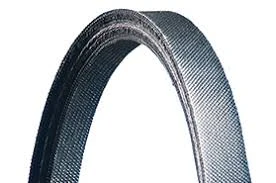- Arabic
- French
- Russian
- Spanish
- Portuguese
- Turkish
- Armenian
- English
- Albanian
- Amharic
- Azerbaijani
- Basque
- Belarusian
- Bengali
- Bosnian
- Bulgarian
- Catalan
- Cebuano
- Corsican
- Croatian
- Czech
- Danish
- Dutch
- Afrikaans
- Esperanto
- Estonian
- Finnish
- Frisian
- Galician
- Georgian
- German
- Greek
- Gujarati
- Haitian Creole
- hausa
- hawaiian
- Hebrew
- Hindi
- Miao
- Hungarian
- Icelandic
- igbo
- Indonesian
- irish
- Italian
- Japanese
- Javanese
- Kannada
- kazakh
- Khmer
- Rwandese
- Korean
- Kurdish
- Kyrgyz
- Lao
- Latin
- Latvian
- Lithuanian
- Luxembourgish
- Macedonian
- Malgashi
- Malay
- Malayalam
- Maltese
- Maori
- Marathi
- Mongolian
- Myanmar
- Nepali
- Norwegian
- Norwegian
- Occitan
- Pashto
- Persian
- Polish
- Punjabi
- Romanian
- Samoan
- Scottish Gaelic
- Serbian
- Sesotho
- Shona
- Sindhi
- Sinhala
- Slovak
- Slovenian
- Somali
- Sundanese
- Swahili
- Swedish
- Tagalog
- Tajik
- Tamil
- Tatar
- Telugu
- Thai
- Turkmen
- Ukrainian
- Urdu
- Uighur
- Uzbek
- Vietnamese
- Welsh
- Bantu
- Yiddish
- Yoruba
- Zulu
Ноя . 23, 2024 08:03 Back to list
synchronous timing belt
Understanding Synchronous Timing Belts
Synchronous timing belts are crucial components in many mechanical systems, specifically in power transmission applications where precision and reliability are paramount. These belts are designed to transmit power between two or more rotating shafts in a controlled manner, ensuring that the motion is synchronized. This synchronization is achieved through the use of teeth on the inside of the belt, which fit into grooves on the pulleys attached to the shafts.
One of the primary advantages of synchronous timing belts is their ability to maintain a consistent speed ratio between the driving and driven shafts. Unlike traditional V-belts, which can slip or lose tension over time, synchronous timing belts provide a positive engagement with the pulleys, thereby eliminating slippage. This characteristic makes them an ideal choice for applications requiring precise timing, such as in conveyor systems, robotics, and automotive engines.
Synchronous timing belts are made from high-strength materials, often reinforced with fibers to enhance durability and performance. Common materials include neoprene and polyurethane, which offer excellent flexibility and resistance to wear and environmental factors. The construction of these belts ensures that they can operate at various speeds and loads without compromising their integrity.
synchronous timing belt

In addition to their strength and reliability, synchronous timing belts come in various sizes and configurations to meet the specific needs of different applications
. Factors such as belt width, pitch, and length can be customized, allowing engineers to design systems that optimize performance and efficiency. Moreover, the system design often involves selecting the appropriate pulley sizes and configurations to achieve the desired speed and torque.Maintenance of synchronous timing belts is relatively straightforward, but it is essential to monitor for signs of wear, such as cracking or fraying. Regular inspections help to prevent unexpected failures, which could lead to costly downtime in industrial settings. Additionally, maintaining the correct tension is vital since both over-tensioning and under-tensioning can lead to premature wear or failure of the belt.
In automotive applications, synchronous timing belts, often referred to simply as timing belts, play a critical role in ensuring that the engine's camshaft and crankshaft rotate in harmony. This synchronization is vital for engine performance and efficiency, making regular checks on the timing belt a crucial part of vehicle maintenance.
In conclusion, synchronous timing belts represent a vital technology in modern engineering and manufacturing sectors. With their ability to provide precise and reliable power transmission, they are indispensable in numerous applications. As industries continue to advance and demand higher efficiency, the importance and utilization of synchronous timing belts are likely to grow even further. Understanding their properties and maintenance needs will ensure that they perform optimally, maximizing productivity and minimizing downtime.
-
Korean Auto Parts Timing Belt 24312-37500 For Hyundai/Kia
NewsMar.07,2025
-
7PK2300 90916-T2024 RIBBED BELT POLY V BELT PK BELT
NewsMar.07,2025
-
Chinese Auto Belt Factory 310-2M-22 For BMW/Mercedes-Benz
NewsMar.07,2025
-
Chinese Auto Belt Factory 310-2M-22 For BMW/Mercedes-Benz
NewsMar.07,2025
-
90916-02660 PK Belt 6PK1680 For Toyota
NewsMar.07,2025
-
drive belt serpentine belt
NewsMar.07,2025

